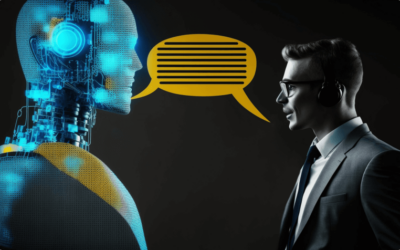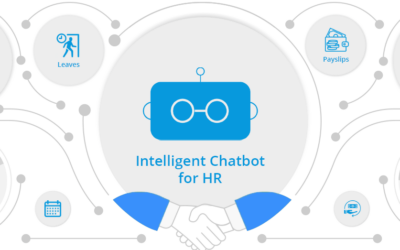
Introduction
Conversations backed by technology are increasing in number day by day. Around 80% of people have interacted with a chatbot at least once. Chatbot chats have almost 90% satisfaction rates on average. These are high only when the bot has been worked at a minuscule level. To know how customer-facing bots function, you need to understand what conversation design is.
What is conversation design & why it matters?
Conversation design is a design language based on human conversation. It is an amalgamation of technology, language, and psychology to replicate human-like assistance through conversational AI bots.
Conversation design matters because the smoother the conversation between the bot and the customer, the better the customer’s experience. Conversation design matters because it helps businesses identify the loopholes in conversations and the possibilities they need to be prepared for in any situation.
The 10 steps to create seamless conversations through
conversation design
Step 1: Identify business goals, objectives, and limitations
- Identify purpose: The first step to framing a conversation design is to understand why the business wants a bot, its objectives, and if it is a lucrative idea for the creator and the business end to bring a bot to life.
- Define target audience: After the objectives are defined, the target audience needs to be determined to develop a bot persona. The type of audience the bot functions for sets the tone for the conversations, internal or external.
Step 2: Set bot functionality
- Bot functionality: To develop a conversation design, knowing the bot’s function is a must. Bot functions are the tasks the bot is expected to perform; these could be authorizing users based on login, reading data from a CRM or writing data into a CRM, viewing or sharing reports, and more.
Step 3: Create a bot persona
- Build a persona: Persona is how the bot comes across to users. It’s how a bot looks, its external avatar, and its tone. If the bot is for a sales team, the personality given to the bot would be motivational. If the bot is customer-facing, it might be conversational & engaging.
- Name the bot: To personalize bot usage through phone, chat, or any other mode, it’s easier to give it a name and persona identification. This also facilitates accepting it as a part of a daily work routine and eliminates unfamiliarity.
- Assign a role: A conversational AI bot plays its roles dynamically. While designing conversations, it is imperative to assign a specific role to the bot. Depending on the situation-specific requirements, it could be a guide, motivator, colleague, or assistor. If the bot is performing the customer support role, it will take up the role of an agent to match the criteria.
Step 4: Combine bot persona with functions
- Building bot functions: Step four of conversational design involves facilitating how the bot will respond to any question asked. This step connects the bot’s response to any inquiry the backend process asks. For example, if a salesperson wants to know their schedule, pulling out the schedule from the connected repository is the functional objective. The persona part comes into the picture when the bot says, “sure, let me quickly reach out to the admin and let you know.
Step 5: Design the mockups
- Creating mock design: In this stage of conversation design for a bot, the simulated screen is designed to see how the bot will look when the end users interact. The mock-up helps check how users interact with the bot. This stage will bring to life all elements of the bot’s personality together.

Step 6: Identify gaps to enhance UX
- Enhance UX: After a mock screen is designed, it needs to be evaluated according to the purpose it is created for. The foremost element focused on here is how the user experience interacting with the bot will look and feel. Gaps can be identified and changed in this step if elements are missing, say the avatar doesn’t look approachable or so on.
Step 7: Conversation design testing
- Test the bot: A Subject Matter Expert & a test user who isn’t aware of the bot’s intricacies will be brought into the scene at this stage of conversation design. A mock or a rehearsal of the bot will take place on all of the above-mentioned entities. A thorough check is done on whether the bot and the design can seamlessly handle the user’s inputs.
- Out-of-scope responses: There may arise scenarios where the test user might ask the bot some questions unrelated to the existing topic. Even minute details of the bot’s response, like ‘ I’m sorry, I didn’t understand that,’ are tested to ensure user satisfaction best.
Step 8: Bot development
- Identify minute-level changes: After the testing is done and all parties are satisfied with the changes in the mock version of the bot, the conversation design becomes a reality. After a sign-off, the bot is sent to development; this is the last stage of conversation design before the bot comes alive.
Conclusion
Conversational design is a practice that is essential regardless of the size of the business or industry to accompany conversation strategy. Producing interactive flows for chatbot, text, or call conversations that have empathetic understanding is essential in today’s organizational functions, either externally or internally.
If you’d like to design your AI bot, reach out to our conversational AI expert here.









